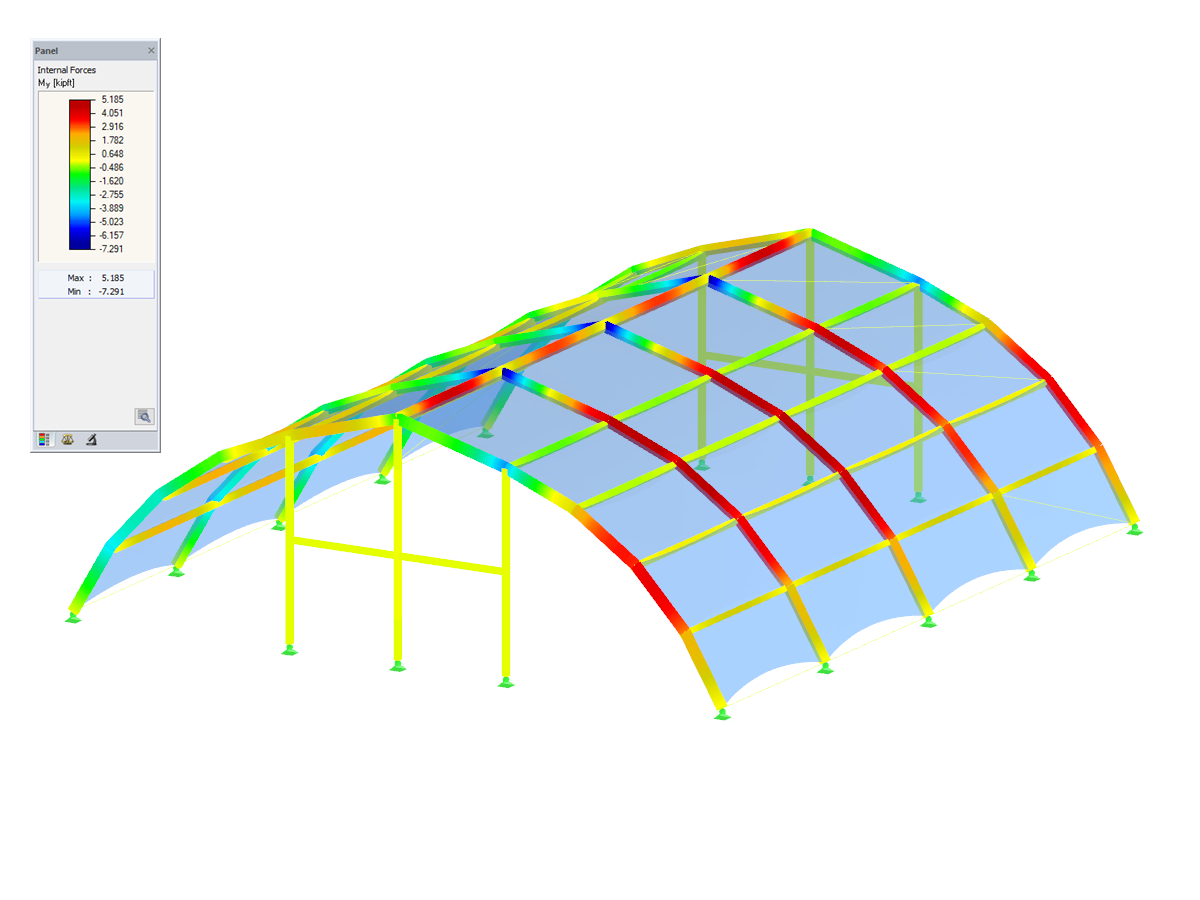Bridge-Type Structures (ADM 2015 Sect. B.2.2 [2])
For a short history of this provision, the Aluminum Association first published the Specifications for Aluminum Structures in 1967, which included both building and bridge structures. Aluminum materials have been used in bridge structures since the early to mid-19th century. Therefore, this early ADM standard included bridge design considerations in addition to buildings according to ASD. Different safety factors were specified depending on bridge-type or building-type structures.
When LRFD was added to the ADM in 1994, the bridge provisions were already included in the AASHTO standard and intentionally left out of the ADM. In October 2007, LRFD became the mandatory design method for all highway structures in the United States. Therefore, in Chapter B Design Requirements, the previous ADM 2015 Sect. B.2.2 Bridge-Type Structures was completely removed in ADM 2020.
Buckling and Strength Constants for Curved Elements (Sect. B.4 [1])
Modifications have been made to the buckling constants intersection (Ct and Ctb) equations for uniform compression in curved elements and flexural compression in curved elements specified in Table B.4.1 and Table B.4.2 [1].
Direct Strength Method (Sect. F.3.2 [1])
Section F.3 [1] addresses the nominal flexural strength, Mnlb, for the limit state of local buckling. Three methods can be used to determine Mnlb, including the direct strength method in Sect. F.3.2 [1].
Previously, ADM 2015 Sect. F.3.2 referred directly to Sect. B.5.5.5 [2]. This required the user to correctly classify all section elements as either uniform compression (Sect. B.5.4 [2]) or flexural compression (Sect. B.5.5 [2]). Only the relevant elements under flexural compression would qualify for Sect. B.5.5.5 [2] and therefore, Mnlb could be calculated.
ADM 2020 now includes the equations to calculate Mnlb directly in Sect. F.3.2. This simplification from the previous standard can be used to calculate the flexural buckling strength for all elements without the initial classification from Sect. B.4 and Sect. B.5 [1].
Bending Coefficient Cb (Sect. F.4.1 [1])
The 2015 ADM included two distinct sections in F.4.1 to calculate the bending coefficient used in the lateral-torsional buckling provisions. This included the doubly symmetric shape (Sect. F.4.1.1 [2]) and singly symmetric shapes (Sect. F.4.1.2 [2]).
The 2020 ADM has combined these sections and instead modified the Cb equation (Eqn. F.4-2) to include an additional Rm variable, which is the bending coefficient factor for singly symmetric members subjected to double-curvature bending from transverse loading. Additional changes in Eqn. F.4-2 [1] come from the Guide to Stability Design Criteria for Metal Structures, 6th Edition (Wiley, 2010) and Wong and Driver (2010). However, the ADM 2015 references Kirby and Nethercot (1979) for this equation.
Single Angles (Sect. F.5)
Modifications to Ch. F for single angles include modifications to the lateral-torsional buckling strength for bending about the geometric axes (Sect. F.5.1 [1]). Eqns. F.5-4 through F.5-5 for equal leg angles with lateral-torsional restraint only at the point of maximum moment (Sect. F.5.1b) and Eqns. F.5-6 through F.5-7 for equal leg angles without lateral-torsional restraint (Sect. F.5.1c [1]) include slightly different coefficient values when compared to ADM 2015.
Simplifications were made from ADM 2015 to ADM 2020 when referring to bending about the principal axes (Sect. F.5.2 [1]. Major axis bending lateral-torsional buckling strength (Sect. F.5.2a [1]) has been combined into a single section applicable to both equal and unequal leg angles. Therefore, modifications have been made to Eqn. F.5-8 [1] to determine the lateral-torsion buckling strength when compared to the ADM 2015.
Application in RF-/ALUMINUM ADM
The above is not an exhaustive list of all ADM 2020 updates when compared to the 2015 standard. Rather, this reflects which updates were incorporated into the RFEM and RSTAB add-on module RF-/ALUMINUM ADM, which performs aluminum member design according to the ADM for either ASD or LRFD considerations. For a in-depth look at the design workflow utilizing RFEM and RF-ALUMINUM ADM, refer to the previously recorded webinar:
.png?mw=760&hash=42af703b3493994afe02b37f5e7194d30f98d109)